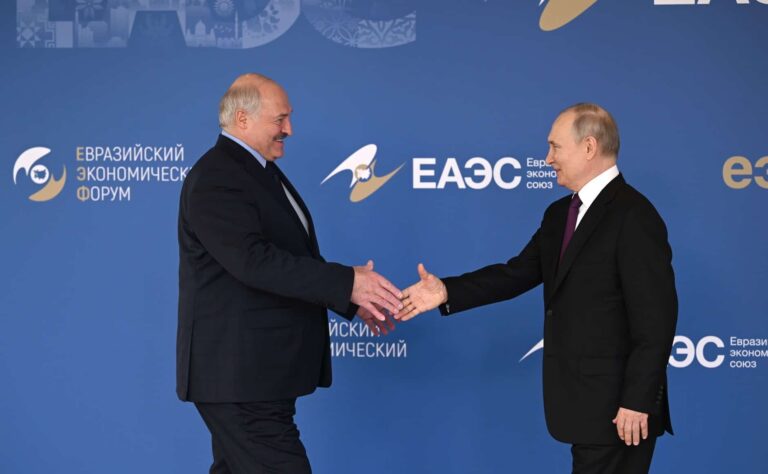Russia will place tactical nuclear weapons in Belarus, at the gates of the European Union. The deployment of the atomic weapons on Belarusian territory had already been announced in March 2023 by Russian leader Vladimir Putin. But the agreement with the government of Aleksandr Lukashenko officially took place on 25 May, as reports Moscow’s Tass news agency.
Table of Contents
Russia brings “non-strategic” nuclear weapons to Belarus
Since Russia invaded Ukraine, the Kremlin has put some 10,000 troops in Belarus and is now preparing to bring in a contingent of tactical nuclear missiles as well.
A decision that goes against the will of the Belarusian people. Who, in a March poll sided 74% against Moscow’s deployment of nukes in Belarus, and against the country’s commitments under the Nuclear Non-Proliferation Treaty (NPT) and the 1994 Budapest Memorandum.
This is the first time an atomic weapon state has deployed nuclear weapons abroad since the adoption of the NPT. But Russia had prepared for escalation by exiting the treaty in February 2023. An act that could destroy the global non-proliferation regime established with the end of the Cold War. Thus increasing doubts about the credibility assumed by the nuclear powers.
According to a report by the Tass news agency, the Belarusian armed forces have already received several Iskander-M missiles. And, some Soviet-made Sukhoi Su-25 aircraft have been modified for the use of other tactical nuclear weapons.
The Iskanders have a range of about 500 kilometres. But the use of other smaller devices equipped on military aircraft departing from Belarus gives Moscow the ability to reach virtually all EU countries.
What are tactical nuclear weapons
The atomic warheads as the Iskander would not be strategic nuclear weapons deployable for deterrence. I.e. those capable of completely wiping out entire cities.
But, tactical nuclear weapons. These are smaller warheads for use on the battlefield and to hit limited targets. They are less powerful than strategic warheads and with less destructive potential. They have the function of disabling or reducing the aggressive capacity of enemy armies. Or, halting their advance on the battlefield.
The greatest fear at the moment is not their use against the European Union, because doing so would trigger a reaction from NATO by Putin.
Rather, the concern is that they will be deployed in western Ukraine when the Kyiv forces begin their counteroffensive in Moscow-occupied territories.
Read also: Ukraine’s preannounced counteroffensive: what are the goals and when it may start












